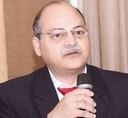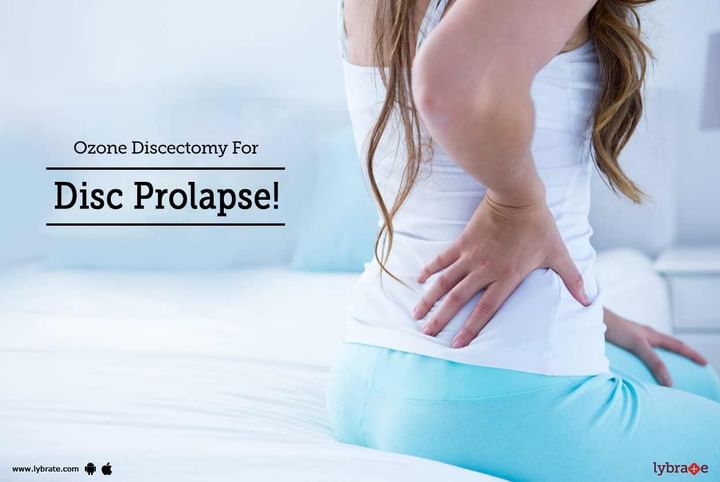Ozone Discectomy For Disc Prolapse!
Ozone local anaesthesia with strict real time radiological control, which ensures the proper placement of Ozone in the center of the disc making it shrink.
Low Sciatica and PIVD:
Among working-age people, as many as 20 percent experience back symptoms at leastevery year. facet arthropathy, sciatica, muscle strain, sacroilitis, bulging or herniated discs and degenerative disc disease. Prolapsed intervertebral discs (PIVD) are the most common cause of low back pain associated with a defined structural Abnormality.
Patients who are not helped by weeks of conservative therapy are often referred forpain that has persisted beyond a four-week period should be referred to a multidisciplinary pain center.
Different Non Surgical Interventions Employed Successfully:
- Epidural Steroid Inj.
- Epidurogram & Epidurolysis.
- Nerve root sleeve/ transforaminal Inj.
- Intra-discal steroid inj.
- Nucleoplasty- Thermal & Mechanical
- Ozone Discolysis
Conventional treatment methods for back pain comprise lamminectomy/ discectomy microsurgery, endoscopic disectomy and percutaneous arthoscopic disectomy, among others. These are invasive methods and their goal is to remove or contain the protruding disc.
However, these methods have occasionally demonstrated a discrete incidence of failure and/or recurrence. Outcome studies of lumber disc surgeries ranging from 4% to 15%, have been noted.
In case of surgery, the chance of recurrence of pain is nearly 15 percent as against less than three percent in Ozone treatment.
Reasons for the failures of conventional surgeries are:
- Dural fibrosis
- Arachnoidal adhesions
- Muscels and fascial fibrosis
- Mechanical instability resulting from the partial removal of bone & ligamentous structures required for surgical exposure & decompression
- Presence of Neuropathy.
- Multifactorial etiologies of back leg pain,
- some left unaddressed surgically.
Understanding the need for Nano-Technology
The various treatment options have confused clinicians and investigators due to high failure rate and complications associated with different kinds of surgeries and interventions. There has been a surge of interest in the search for a safer alternative method of decompressing the nerve roots maintaining the structural stability.
- Another safe least invasive alternative therapy that has been receiving exposure in Europe is the use of medical Ozone (02/03 mixture) in the treatment of PIVD.
- Epidural steroid injection, transforaminal epidural decompressions has a high success rate (up to 85%), but chances of recurrences are there specially if these interventions are done at later stage.
- anaphylaxis following intradiscal chymopapain injection.
- Injection of Ozone for discogenic radiculopathy (low back pain with radiation to legs) has developed as a revolutionary alternative to chemonucleolysis and disc surgery .
The use of ozone revolution for treating disc diseases
Muto suggested intradiscal injection of Ozone for a disc Ozone injection into the intervertebral disc. After that successful outcome has been reported from various European centers.
It is very important to note from those reports that complications are remarkably few. Not a serious single life-threatening complication was found even after 120,000 cases of Ozone nucleolysis, which stresses the safety of these procedures.
The most critical portion of performing any of the minimally invasive procedures is the accuracy and safe positioning of the needle (or terminal device) in the centre of the disc space.
The risk in ozonucleolysis is particularly minimised, with the use of a very thin 22/25-gauge needle. It may take anywhere from 5 to 30 minutes to position a needle in the centre of the disc space under radiological guidance. Once the needle is safely placed in position, ozonucleolysis is completed in only another 2 to 3 minutes.
How does water contain within the domain of proteoglycans?
The water binding capacity of the proteoglycan molecule is partially a property of its size and physical shape, but the main force that holds water to the molecule stems from the ionic, carboxyl (COOH) and sulphate (SO4) radicals of the glycosaminoglycan chains.
The ozone can have a direct effect on these carboxyl and sulphate groups, breaking down some of these glycosaminoglycan chains which make up the proteoglycans.
The destruction of these cross-linked structures reduces their ability to hold water therefore diminishing the size of the herniation by collagen fibers and signs of regression (vacuole formation and fragmentation)- a sort of disk mummification
By Inhibiting inflammatory Nociceptor, synthesis of Prostaglandins & Secretion of Proteinases, Liberation of Bradykinin and Pain Inducing Products. Several studies suggest disc inflammation as a mechanism of sciatica due to disc herniation.
Ozone has been shown to have an effect on the inflammatory cascade by inhibiting synthesis of proinflammatory prostaglandins or release of bradykinin or release of algogenic compounds; increased release of antagonists or soluble receptors able to neutralize proinflammatory cytokines like interleukin (IL)-1, IL-2, IL-8, IL-12, IL-15, interferon, and tumor necrosis factor. Therefore, by reducing the inflammatory components there is a corresponding reduction in pain.
By stimulating fibroblasts&immunosuppressor cytokines
- Local production of Antioxidant Enzymes
- Another action which may prove to be one of the most important is the stimulation of
- Release of immunosuppressor cytokines like transforming growth factor, and IL-10 fibroblastic activity by ozone. Fibroblasts initiate the repair process by stimulating the deposition of collagen.
- Although yet to be validated, this mode of action could explain the resolution of PIVD on CT scans and the small percentage of patients who have relapses after the completion of treatment plan.
- Ozone may have a reflex therapy effect called ‘chemical acupuncture’, breaking the chain of infection which is healed with antibiotics.
In fact, over 120,000 patients have been treated successfully worldwide using the injection of medical ozone with a success rate of 80-90% and with a near nil rate of procedure-related complications. The procedure is a safe and effective alternative to open surgical procedure.
Patients get the advantage of going home after a short recovery on the same day. They generally go to work within a week and are spared prolonged absence from work and disability, The treatment relieves pain substantially and, after two sittings, people 'can go back to work under medical guidance.
Comparison: 1. More hospital stay One day/day care 2. Complications of prolonged surgery&spine surgery is the treatment of choice for prolapsed disc (PIVD) done under local anaesthesia in a daycare setting. This procedure is ideally suited for cervical & lumbar disc herniation with radiculopathy.
The total cost of the procedure is much less than that of surgical discectomy. All these facts have made this procedure very popular in European countries.
It is also gaining popularity in our country due to high success rate, less invasiveness, fewer chances of recurrences, remarkably fewer side effects meaning high safety profile, short hospital stay, no post-operative discomfort or morbidity and low cost.



+1.svg)
